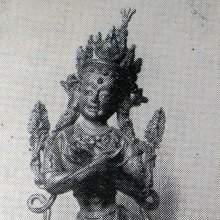Sound: 1 definition
Introduction:
Sound means something in Hinduism, Sanskrit. If you want to know the exact meaning, history, etymology or English translation of this term then check out the descriptions on this page. Add your comment or reference to a book if you want to contribute to this summary article.
Images (photo gallery)
(+2 more images available)
In Hinduism
Yoga (school of philosophy)
Source: ORA: Amanaska (king of all yogas): A Critical Edition and Annotated Translation by Jason BirchSounds can denoted by the Sanskrit terms Nāda or Śabda, according to the Amanaska Yoga treatise dealing with meditation, absorption, yogic powers and liberation.—Accordingly, as Īśvara says to Vāmadeva: “[...] [Now], I shall define the nature of that highest, mind-free absorption which arises for those devoted to constant practice. [...] By means of an absorption for two Palas (i.e., twelve breaths), a sound (nāda) in the heart rises up. [The Yogin] should recognize it to be the unstruck sound and should not fix his mind on it. By means of an absorption for a period of four Palas, [this following] experience may occur: suddenly, an agreeable or disagreeable sound (śabda) enters the ear. [...]”.

Yoga is originally considered a branch of Hindu philosophy (astika), but both ancient and modern Yoga combine the physical, mental and spiritual. Yoga teaches various physical techniques also known as āsanas (postures), used for various purposes (eg., meditation, contemplation, relaxation).
See also (Relevant definitions)
Starts with: Sound in the heart, Soundarya-chetana, Soundarya-prashaadhan, Soundaryashakti, Soundaryasiddhi, Soundougou.
Ends with: Internal sound, Unstruck sound.
Full-text (+6822): Shabda, Dhvani, Nada, Rava, Shvana, Arava, Vina, Ninada, Nikvana, Sitkara, Ghosha, Humkara, Kvana, Anusvara, Shiksha, Bhran, Anunada, Ghantavadya, Keka, Svri.
Relevant text
Search found 487 books and stories containing Sound; (plurals include: Sounds). You can also click to the full overview containing English textual excerpts. Below are direct links for the most relevant articles:
Bhagavati-sutra (Viyaha-pannatti) (by K. C. Lalwani)
Part 1 - On hearing of sound < [Chapter 4]
Part 4 - On import, sound and suggestions < [Chapter 1]
Part 2 - Sound of a horse < [Chapter 3]
Visuddhimagga (the pah of purification) (by Ñāṇamoli Bhikkhu)
(2) The Divine Ear Element < [Chapter XIII - Other Direct-knowledges (abhiññā-niddesa)]
B. Description of the Five Aggregates < [Chapter XIV - The Aggregates (khandha-niddesa)]
Dependent Origination (viii): Craving < [Chapter XVII - Dependent Origination (paññā-bhūmi-niddesa)]
Vakyapadiya of Bhartrihari (by K. A. Subramania Iyer)
Verse 1.102 < [Book 1 - Brahma-kāṇḍa (or Āgama-samuccaya)]
Verse 1.103 < [Book 1 - Brahma-kāṇḍa (or Āgama-samuccaya)]
Verse 1.104 < [Book 1 - Brahma-kāṇḍa (or Āgama-samuccaya)]
The Tattvasangraha [with commentary] (by Ganganatha Jha)
Verse 128 < [Chapter 5 - The Doctrine of Sound (‘Word-Sound’) being the Origin of the World]
Verse 2575 < [Chapter 24b - Arguments against the reliability of the Veda (the Revealed Word)]
Verse 2574 < [Chapter 24b - Arguments against the reliability of the Veda (the Revealed Word)]
Maha Prajnaparamita Sastra (by Gelongma Karma Migme Chödrön)
Section A.2 - Rejection of pleasant sounds < [Part 2 - Means of acquiring meditation]
Part 3 - Explanation of the word ‘śrutam’ (śruta) < [Chapter II - Evam Mayā Śrutam Ekasmin Samaye]
Story of the Kiṃnarī and the five hundred ṛṣis < [Part 2 - Means of acquiring meditation]
Nyaya-Vaisheshika categories (Study) (by Diptimani Goswami)
Qualities (15): Śabda (Sound) < [Chapter 4 - Quality and Action]
Substance (5): Ākāśa (Ether) < [Chapter 3 - Dravya (Substance)]
Different Types of Quality (Introduction) < [Chapter 4 - Quality and Action]
Related products
(+9 more products available)
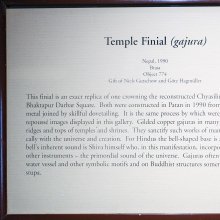
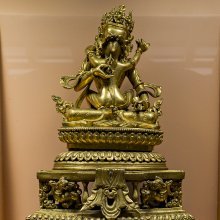
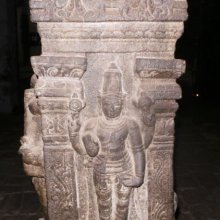
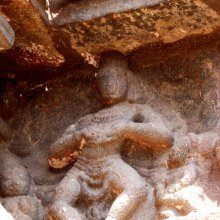
.jpg)
